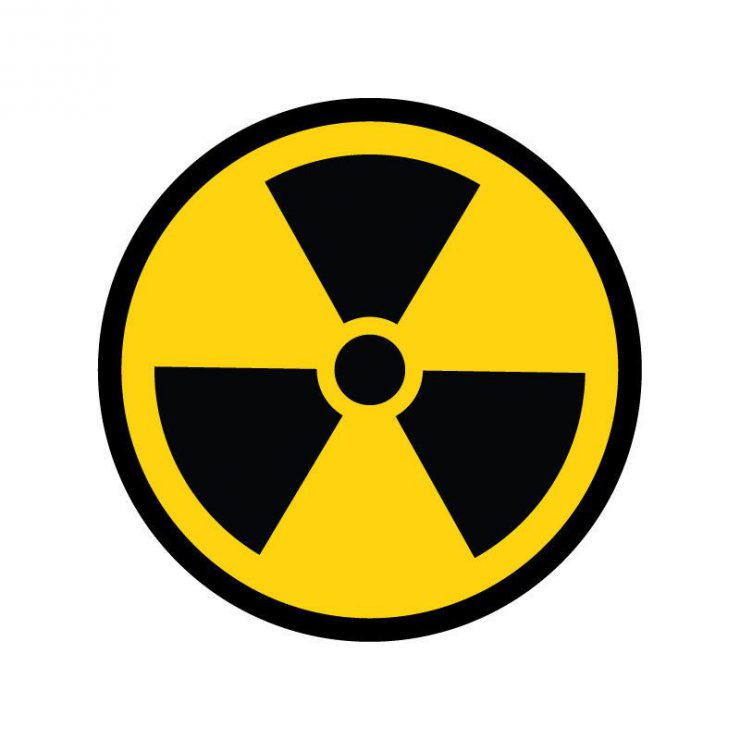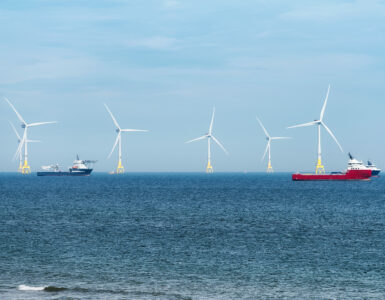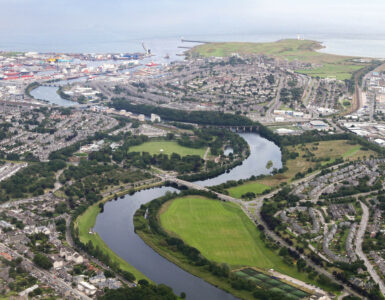The waste products from nuclear power stations are radioactive, which can be harmful to people and the environment if not handled safely.
But what is nuclear waste? How much does it impact our daily lives? And could it be useful to us?
What Is Nuclear Waste?

Nuclear waste is the material that remains once radioactive fuel, such as uranium, is used in the nuclear fission process.
It doesn’t glow and it’s not bright green or yellow, despite what you may have seen in cartoons. In fact, it looks the same as it did when it first went into the nuclear reactor.
There are three different levels of nuclear waste:
- Low-level waste: This is usually pieces of clothing, lab equipment, and other small items that have been (or might have been) exposed to radiation, for example in hospitals or nuclear power stations.
- Intermediate (medium) level waste: This is more radioactive than low level waste, and usually comes from reactors that are no longer in use or other nuclear power station parts that have picked up radiation over time.
- High-level waste: This is the most radioactive type of waste, and includes fuel such as uranium that has been used in the reactor already (spent fuel).
How Much Is There?
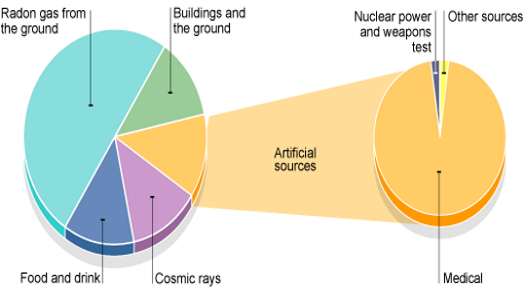
Image: Sources of everyday radiation. BBC Bitesize
The amount of waste produced by the UK’s nuclear power stations in a year is around 0.84L per person, so a little less than a litre bottle of your favourite soft drink.
Low-level waste makes up the biggest percentage of nuclear waste (90%), intermediate waste is next (7%) and the rest is high-level waste (3%).
In the bigger picture of background radiation, waste from nuclear power stations is extremely small.
The ‘sources of everyday radiation’ graph above shows how small a percentage nuclear waste contributes to background radiation around us, compared to natural and other artificial sources such as buildings, food and medical radiation.
What Do We Do With It?
The different levels of waste require different storage methods.
- High-level waste is usually stored underwater in a cement or stainless steel case for 40 years at the reactor where it was produced. This is so the waste can be kept cool as its radioactivity drops, as high level waste gives off a lot of heat.
- Intermediate waste does not give off as much heat as high-level waste, but still needs to be stored in cement or stainless steel casing to ensure the radioactive waste does not escape.
- Low-level waste does not give off heat so only requires storage in metal containers.
But where do we put these casks after the first 40 years are up, so that the radiation can decay safely over the next thousand years?
This is where people can start to disagree over the best option. Storage facilities need to be carefully considered, as the waste can stay there for over 1,000 years.
Waste can be stored far underground, in places where there is enough space away from water sources and other environmental concerns.
What Could We Use It For?
Often, not all the energy is taken from radioactive material, such as Uranium, the first time it’s used in the reactor. This means that in some cases, we can re-use the waste products for a second time in order to get the most from the radioactive material.
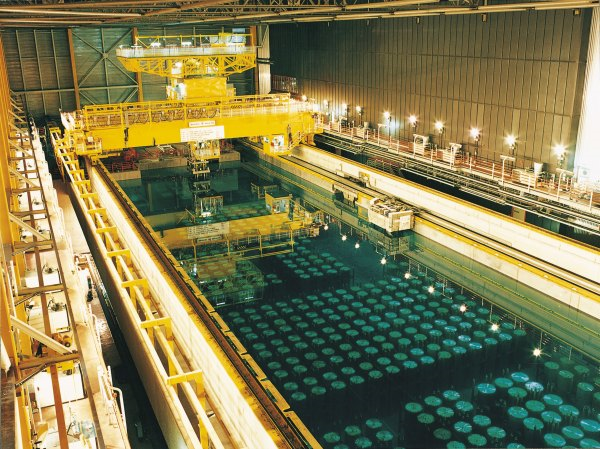
This photo shows the storage pond for spent fuel at the Thermal Oxide Reprocessing Plant at Sellafield in the UK.
Sellafield stores all of the UK’s high level waste for now, until the decision is made as to where it should be permanently disposed of.
Image Credit: Sellafield Ltd
We do this in the UK, as do France and Japan, but only once. This is called a closed fuel cycle. An open fuel cycle occurs when the uranium or other source is used only once before being disposed of in the same way as above.
The Future Of Nuclear Waste
Despite the limited options to use nuclear waste for now, policy makers are looking at ways to allow future generations to recover the waste we put underground today, in case there are ways of using it that could benefit the world in the future.
And it’s the uncertainty of the future of nuclear waste that makes it a big talking point, as we haven’t yet seen what will happen when we store waste underground for long periods of time, or what innovations may happen that mean we can use and benefit from the waste.
For now though, all we can do is make sure it continues to be stored safely, wherever that may be…



